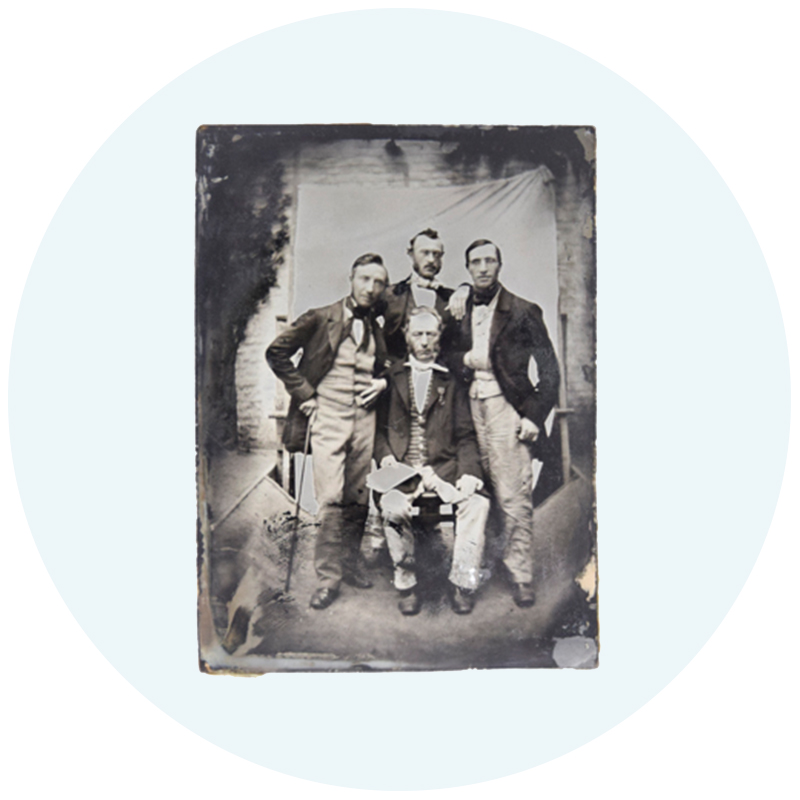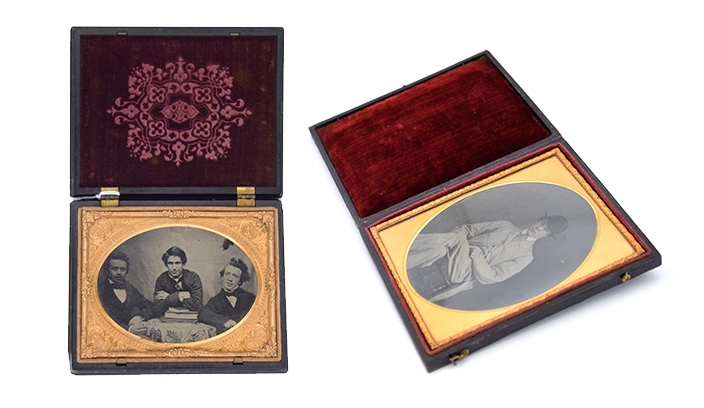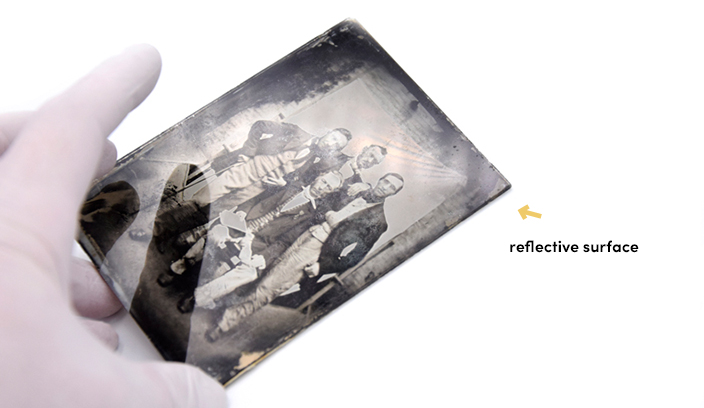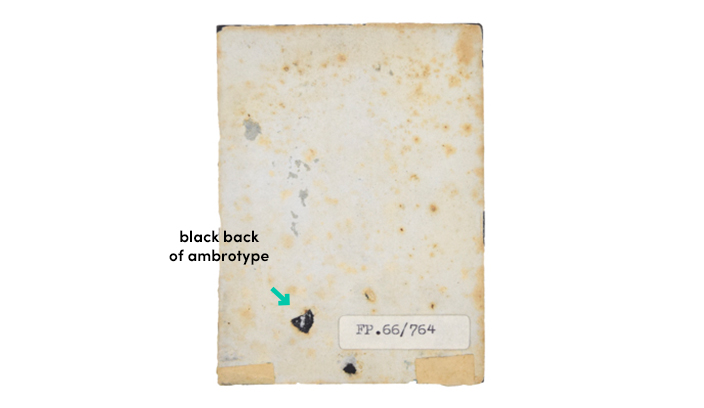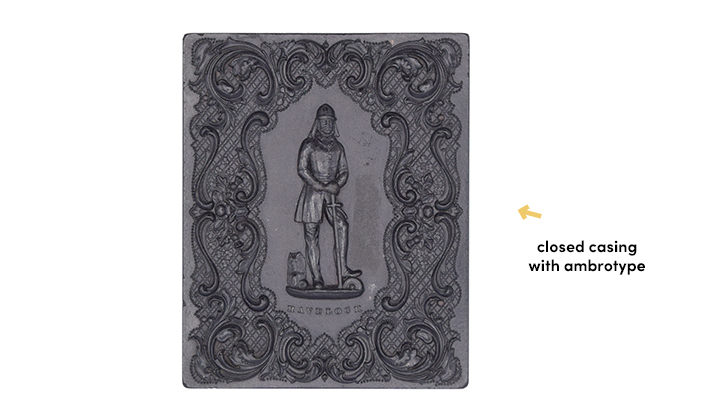Exceptional case: the ambrotype
You have an ambrotype – a rare find! Ambrotypes are photographic prints on glass, often in a nicely decorated casing. They were very popular from the 1850s, and replaced the more expensive daguerreotypes on silver-plated copper sheets.
Ambrotypes are sometimes confused with daguerreotypes, but the latter has a silverish reflection, which an ambrotype doesn’t.

